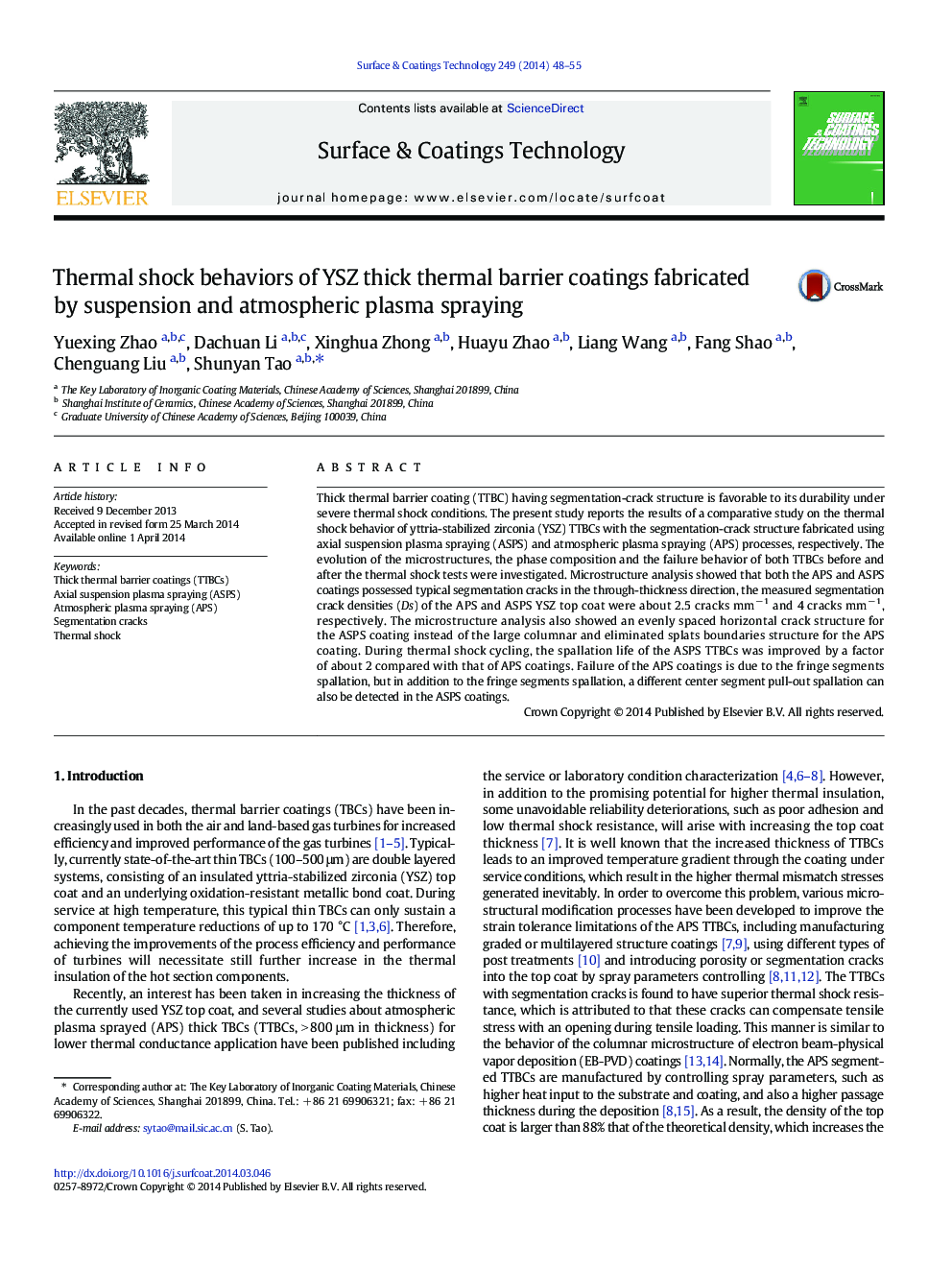| Article ID | Journal | Published Year | Pages | File Type |
|---|---|---|---|---|
| 1657505 | Surface and Coatings Technology | 2014 | 8 Pages |
Abstract
Thick thermal barrier coating (TTBC) having segmentation-crack structure is favorable to its durability under severe thermal shock conditions. The present study reports the results of a comparative study on the thermal shock behavior of yttria-stabilized zirconia (YSZ) TTBCs with the segmentation-crack structure fabricated using axial suspension plasma spraying (ASPS) and atmospheric plasma spraying (APS) processes, respectively. The evolution of the microstructures, the phase composition and the failure behavior of both TTBCs before and after the thermal shock tests were investigated. Microstructure analysis showed that both the APS and ASPS coatings possessed typical segmentation cracks in the through-thickness direction, the measured segmentation crack densities (Ds) of the APS and ASPS YSZ top coat were about 2.5 cracks mmâ 1 and 4 cracks mmâ 1, respectively. The microstructure analysis also showed an evenly spaced horizontal crack structure for the ASPS coating instead of the large columnar and eliminated splats boundaries structure for the APS coating. During thermal shock cycling, the spallation life of the ASPS TTBCs was improved by a factor of about 2 compared with that of APS coatings. Failure of the APS coatings is due to the fringe segments spallation, but in addition to the fringe segments spallation, a different center segment pull-out spallation can also be detected in the ASPS coatings.
Related Topics
Physical Sciences and Engineering
Materials Science
Nanotechnology
Authors
Yuexing Zhao, Dachuan Li, Xinghua Zhong, Huayu Zhao, Liang Wang, Fang Shao, Chenguang Liu, Shunyan Tao,
